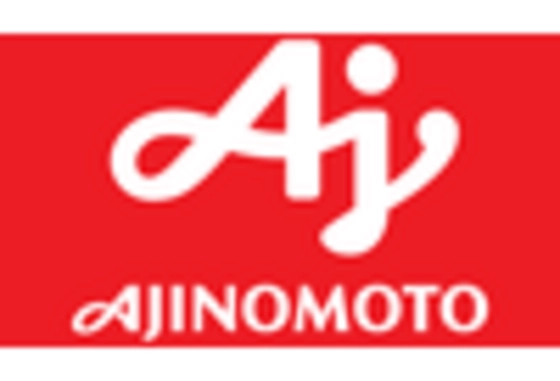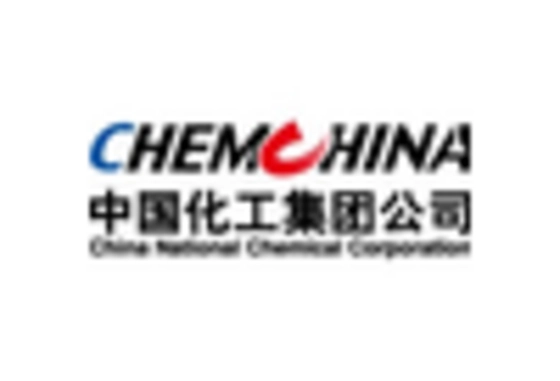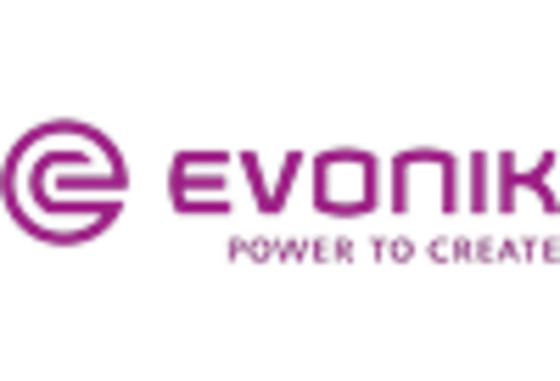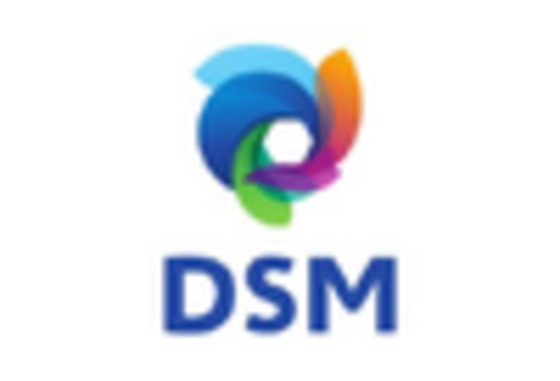-
EXECUTIVE SUMMARY
-
INDUSTRY INTRODUCTION
-
Industry Definition
-
Scope of the Study
- Research Objectives
- Assumptions & Limitations
-
Industry Structure
-
INDUSTRY RESEARCH METHODOLOGY
-
Research Process
-
Secondary Research
-
Primary Research
-
Forecast Model
-
INDUSTRY LANDSCAPE
-
Supply Chain Analysis
- Raw Material Suppliers
- Manufacturers/Producers
- Distributors/Retailers/Wholesalers/E-Commerce
- End Users
-
Porter’s Five Forces Analysis
- Threat of New Entrants
- Bargaining Power of Buyers
- Bargaining Power of Suppliers
- Threat of Substitutes
- Internal Rivalry
-
INDUSTRY DYNAMICS OF THE GLOBAL LYSINE INDUSTRY
-
Introduction
-
Drivers
-
Restraints
-
Opportunities
-
Challenges
-
GLOBAL LYSINE INDUSTRY , BY TYPE
-
Introduction
-
Lysine Hydrochloride
- Industry Estimates & Forecast, 2024-2032
- Industry Estimates & Forecast, by Region, 2024-2032
-
Lysine Monohydrate
- Industry Estimates & Forecast, 2024-2032
- Industry Estimates & Forecast, by Region, 2024-2032
-
Others
- Industry Estimates & Forecast, 2024-2032
- Industry Estimates & Forecast, by Region, 2024-2032
-
GLOBAL LYSINE INDUSTRY , BY GRADE
-
Introduction
-
Feed Grade
- Industry Estimates & Forecast, 2024-2032
- Industry Estimates & Forecast, by Region, 2024-2032
-
Food Grade
- Industry Estimates & Forecast, 2024-2032
- Industry Estimates & Forecast, by Region, 2024-2032
-
Pharma Grade
- Industry Estimates & Forecast, 2024-2032
- Industry Estimates & Forecast, by Region, 2024-2032
-
GLOBAL LYSINE INDUSTRY , BY FORM
-
Introduction
-
Powder
- Industry Estimates & Forecast, 2024-2032
- Industry Estimates & Forecast, by Region, 2024-2032
-
Liquid
- Industry Estimates & Forecast, 2024-2032
- Industry Estimates & Forecast, by Region, 2024-2032
-
Granules
- Industry Estimates & Forecast, 2024-2032
- Industry Estimates & Forecast, by Region, 2024-2032
-
GLOBAL LYSINE INDUSTRY , BY APPLICATION
-
Introduction
-
Food & Beverages
- Industry Estimates & Forecast, 2024-2032
- Industry Estimates & Forecast, by Region, 2024-2032
-
Pharmaceuticals & Nutraceuticals
- Industry Estimates & Forecast, 2024-2032
- Industry Estimates & Forecast, by Region, 2024-2032
-
Personal Care
- Industry Estimates & Forecast, 2024-2032
- Industry Estimates & Forecast, by Region, 2024-2032
-
Animal Feed
- Industry Estimates & Forecast, 2024-2032
- Industry Estimates & Forecast, by Region, 2024-2032
- Poultry
- Swine
- Ruminants
- Aquafeed
- Others
-
GLOBAL LYSINE INDUSTRY , BY REGION
-
Introduction
-
North America
- Industry Estimates & Forecast, 2024-2032
- Industry Estimates & Forecast, by Type, 2024-2032
- Industry Estimates & Forecast, by Grade, 2024-2032
- Industry Estimates & Forecast, by Form, 2024-2032
- Industry Estimates & Forecast, by Application, 2024-2032
- Industry Estimates & Forecast, by Country, 2024-2032
- US
- Canada
- Mexico
-
Europe
- Industry Estimates & Forecast, 2024-2032
- Industry Estimates & Forecast, by Type, 2024-2032
- Industry Estimates & Forecast, by Grade, 2024-2032
- Industry Estimates & Forecast, by Form, 2024-2032
- Industry Estimates & Forecast, by Application, 2024-2032
- Industry Estimates & Forecast, by Country, 2024-2032
- Germany
- UK
- France
- Spain
- Italy
- Rest of Europe
-
Asia-Pacific
- Industry Estimates & Forecast, 2024-2032
- Industry Estimates & Forecast, by Type, 2024-2032
- Industry Estimates & Forecast, by Grade, 2024-2032
- Industry Estimates & Forecast, by Form, 2024-2032
- Industry Estimates & Forecast, by Application, 2024-2032
- Industry Estimates & Forecast, by Country, 2024-2032
- China
- Japan
- India
- Australia & New Zealand
- Rest of Asia-Pacific
-
Rest of the World
- Industry Estimates & Forecast, 2024-2032
- Industry Estimates & Forecast, by Type, 2024-2032
- Industry Estimates & Forecast, by Grade, 2024-2032
- Industry Estimates & Forecast, by Form, 2024-2032
- Industry Estimates & Forecast, by Application, 2024-2032
- Industry Estimates & Forecast, by Region, 2024-2032
- South America
- Middle East
- Africa
-
COMPETITIVE LANDSCAPE
-
Introduction
-
Industry Strategy
-
Key Development Analysis
-
(Expansions/Mergers & Acquisitions/Joint Ventures/New Product Developments/Agreements/Investments)
-
COMPANY PROFILES
-
Global Bio-chem Technology Group Company Limited
- Company Overview
- Financial Updates
- Product/Business Segment Overview
- Strategies
- Key Developments
- SWOT Analysis
-
Ajinomoto Co., Ltd.
- Company Overview
- Financial Updates
- Product/Business Segment Overview
- Strategies
- Key Developments
- SWOT Analysis
-
Cheil Jedang Corp
- Company Overview
- Financial Updates
- Product/Business Segment Overview
- Strategies
- Key Developments
- SWOT Analysis
-
Archer Daniel Midland (ADM)
- Company Overview
- Financial Updates
- Product/Business Segment Overview
- Strategies
- Key Developments
- SWOT Analysis
-
Evonik Industries
- Company Overview
- Financial Updates
- Product/Business Segment Overview
- Strategies
- Key Developments
- SWOT Analysis
-
COFCO Biochemical (Anhui) Co. Ltd.
- Company Overview
- Financial Updates
- Product/Business Segment Overview
- Strategies
- Key Developments
- SWOT Analysis
-
Shandong Shaouguang Juneng Golden Corn Co. Ltd.
- Company Overview
- Financial Updates
- Product/Business Segment Overview
- Strategies
- Key Developments
- SWOT Analysis
-
Changchun Dacheng Group
- Company Overview
- Financial Updates
- Product/Business Segment Overview
- Strategies
- Key Developments
- SWOT Analysis
-
Sunrise Nutrachem Group
- Company Overview
- Financial Updates
- Product/Business Segment Overview
- Strategies
- Key Developments
- SWOT Analysis
-
KYOWA HAKKO BIO CO., LTD.
- Company Overview
- Financial Updates
- Product/Business Segment Overview
- Strategies
- Key Developments
- SWOT Analysis
-
CONCLUSION
-
-
LIST OF TABLES
-
Global Lysine Industry , by Region, 2024-2032 (USD Million)
-
Global Lysine Industry , by Type, 2024-2032 (USD Million)
-
Global Lysine Industry , by Grade, 2024-2032 (USD Million)
-
Global Lysine Industry , by Form, 2024-2032 (USD Million)
-
Global Lysine Industry , by Application, 2024-2032 (USD Million)
-
North America: Lysine Industry , by Country, 2024-2032 (USD Million)
-
North America: Lysine Industry , by Type, 2024-2032 (USD Million)
-
North America: Lysine Industry , by Grade, 2024-2032 (USD Million)
-
North America: Lysine Industry , by Form, 2024-2032 (USD Million)
-
North America: Lysine Industry , by Application, 2024-2032 (USD Million)
-
US: Lysine Industry , by Type, 2024-2032 (USD Million)
-
US: Lysine Industry , by Grade, 2024-2032 (USD Million)
-
US: Lysine Industry , by Form, 2024-2032 (USD Million)
-
US: Lysine Industry , by Application, 2024-2032 (USD Million)
-
Canada: Lysine Industry , by Type, 2024-2032 (USD Million)
-
Canada: Lysine Industry , by Grade, 2024-2032 (USD Million)
-
Canada: Lysine Industry , by Form, 2024-2032 (USD Million)
-
Canada: Lysine Industry , by Application, 2024-2032 (USD Million)
-
Mexico: Lysine Industry , by Type, 2024-2032 (USD Million)
-
Mexico: Lysine Industry , by Grade, 2024-2032 (USD Million)
-
Mexico: Lysine Industry , by Form, 2024-2032 (USD Million)
-
Mexico: Lysine Industry , by Application, 2024-2032 (USD Million)
-
Europe: Lysine Industry , by Country, 2024-2032 (USD Million)
-
Europe: Lysine Industry , by Type, 2024-2032 (USD Million)
-
Europe: Lysine Industry , by Grade, 2024-2032 (USD Million)
-
Europe: Lysine Industry , by Form, 2024-2032 (USD Million)
-
Europe: Lysine Industry , by Application, 2024-2032 (USD Million)
-
Germany: Lysine Industry , by Type, 2024-2032 (USD Million)
-
Germany: Lysine Industry , by Grade, 2024-2032 (USD Million)
-
Germany: Lysine Industry , by Form, 2024-2032 (USD Million)
-
Germany: Lysine Industry , by Application, 2024-2032 (USD Million)
-
France: Lysine Industry , by Type, 2024-2032 (USD Million)
-
France: Lysine Industry , by Grade, 2024-2032 (USD Million)
-
France: Lysine Industry , by Form, 2024-2032 (USD Million)
-
France: Lysine Industry , by Application, 2024-2032 (USD Million)
-
Italy: Lysine Industry , by Type, 2024-2032 (USD Million)
-
Italy: Lysine Industry , by Grade, 2024-2032 (USD Million)
-
Italy: Lysine Industry , by Form, 2024-2032 (USD Million)
-
Italy: Lysine Industry , by Application, 2024-2032 (USD Million)
-
Spain: Lysine Industry , by Type, 2024-2032 (USD Million)
-
Spain: Lysine Industry , by Grade, 2024-2032 (USD Million)
-
Spain: Lysine Industry , by Form, 2024-2032 (USD Million)
-
Spain: Lysine Industry , by Application, 2024-2032 (USD Million)
-
UK: Lysine Industry , by Type, 2024-2032 (USD Million)
-
UK: Lysine Industry , by Grade, 2024-2032 (USD Million)
-
UK: Lysine Industry , by Form, 2024-2032 (USD Million)
-
UK: Lysine Industry , by Application, 2024-2032 (USD Million)
-
Rest of Europe: Lysine Industry , by Type, 2024-2032 (USD Million)
-
Rest of Europe: Lysine Industry , by Grade, 2024-2032 (USD Million)
-
Rest of Europe: Lysine Industry , by Form, 2024-2032 (USD Million)
-
Rest of Europe: Lysine Industry , by Application, 2024-2032 (USD Million)
-
Asia-Pacific: Lysine Industry , by Country, 2024-2032 (USD Million)
-
Asia-Pacific: Lysine Industry , by Type, 2024-2032 (USD Million)
-
Asia-Pacific: Lysine Industry , by Grade, 2024-2032 (USD Million)
-
Asia-Pacific: Lysine Industry , by Form, 2024-2032 (USD Million)
-
Asia-Pacific: Lysine Industry , by Application, 2024-2032 (USD Million)
-
China: Lysine Industry , by Type, 2024-2032 (USD Million)
-
China: Lysine Industry , by Grade, 2024-2032 (USD Million)
-
China: Lysine Industry , by Form, 2024-2032 (USD Million)
-
China: Lysine Industry , by Application, 2024-2032 (USD Million)
-
India: Lysine Industry , by Type, 2024-2032 (USD Million)
-
India: Lysine Industry , by Grade, 2024-2032 (USD Million)
-
India: Lysine Industry , by Form, 2024-2032 (USD Million)
-
India: Lysine Industry , by Application, 2024-2032 (USD Million)
-
Japan: Lysine Industry , by Type, 2024-2032 (USD Million)
-
Japan: Lysine Industry , by Grade, 2024-2032 (USD Million)
-
Japan: Lysine Industry , by Form, 2024-2032 (USD Million)
-
Japan: Lysine Industry , by Application, 2024-2032 (USD Million)
-
Rest of Asia-Pacific: Lysine Industry , by Type, 2024-2032 (USD Million)
-
Rest of Asia-Pacific: Lysine Industry , by Grade, 2024-2032 (USD Million)
-
Rest of Asia-Pacific: Lysine Industry , by Form, 2024-2032 (USD Million)
-
Rest of Asia-Pacific: Lysine Industry , by Application, 2024-2032 (USD Million)
-
Rest of the World (RoW): Lysine Industry , by Region, 2024-2032 (USD Million)
-
Rest of the World (RoW): Lysine Industry , by Type, 2024-2032 (USD Million)
-
Rest of the World (RoW): Lysine Industry , by Grade, 2024-2032 (USD Million)
-
Rest of the World (RoW): Lysine Industry , by Form, 2024-2032 (USD Million)
-
Rest of the World (RoW): Lysine Industry , by Application, 2024-2032 (USD Million)
-
South America: Lysine Industry , by Type, 2024-2032 (USD Million)
-
South America: Lysine Industry , by Grade, 2024-2032 (USD Million)
-
South America: Lysine Industry , by Form, 2024-2032 (USD Million)
-
South America: Lysine Industry , by Application, 2024-2032 (USD Million)
-
Middle East: Lysine Industry , by Type, 2024-2032 (USD Million)
-
Middle East: Lysine Industry , by Grade, 2024-2032 (USD Million)
-
Middle East: Lysine Industry , by Form, 2024-2032 (USD Million)
-
Middle East: Lysine Industry , by Application, 2024-2032 (USD Million)
-
Africa: Lysine Industry , by Type, 2024-2032 (USD Million)
-
Africa: Lysine Industry , by Grade, 2024-2032 (USD Million)
-
Africa: Lysine Industry , by Form, 2024-2032 (USD Million)
-
Africa: Lysine Industry , by Application, 2024-2032 (USD Million)
-
-
LIST OF FIGURES
-
Global Lysine Industry Segmentation
-
Forecast Research Methodology
-
Five Forces Analysis of the Global Lysine Industry
-
Value Chain of the Global Lysine Industry
-
Share of the Global Lysine Industry in 2022, by Country (%)
-
Global Lysine Industry , by Region, 2024-2032,
-
Global Lysine Industry Size, by Type, 2022
-
Share of the Global Lysine Industry , by Type, 2024-2032 (%)
-
Global Lysine Industry Size, by Grade, 2022
-
Share of the Global Lysine Industry , by Grade, 2024-2032 (%)
-
Global Lysine Industry Size, by Form, 2022
-
Share of the Global Lysine Industry , by Form, 2024-2032 (%)
-
Global Lysine Industry Size, by Application, 2022
-
Share of the Global Lysine Industry , by Application, 2024-2032 (%)
-
\r\n









Leave a Comment